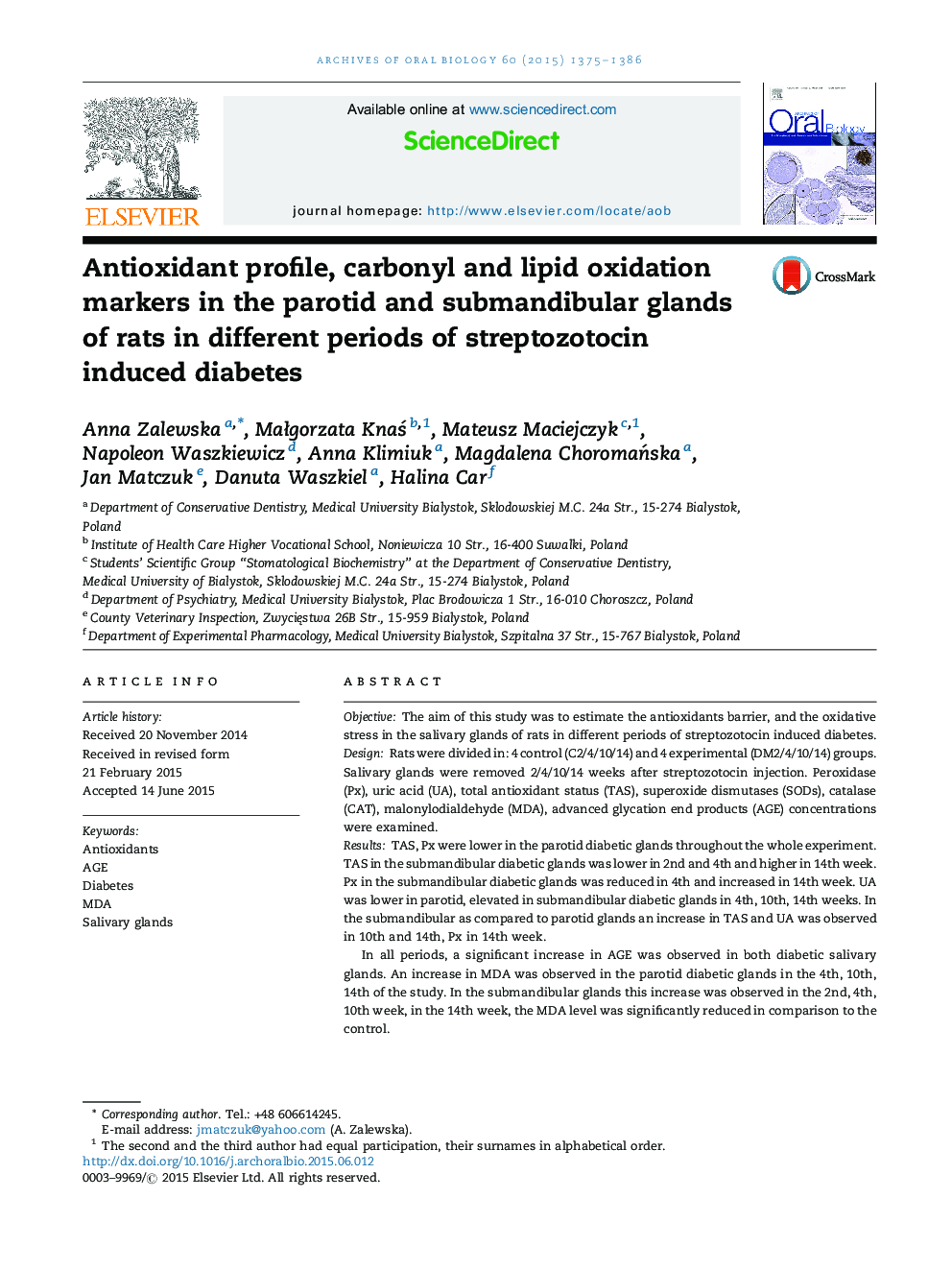| کد مقاله | کد نشریه | سال انتشار | مقاله انگلیسی | نسخه تمام متن |
|---|---|---|---|---|
| 6050875 | 1583296 | 2015 | 12 صفحه PDF | دانلود رایگان |
- Both salivary glands of diabetic rats react differently when exposed to diabetes.
- The parotid antioxidant defense is deficient throughout the whole experiment.
- At the end diabetic submandibular glands became the main antioxidant's source.
- Oxidative and carbonyl damage is more pronounced in the diabetic parotid glands.
ObjectiveThe aim of this study was to estimate the antioxidants barrier, and the oxidative stress in the salivary glands of rats in different periods of streptozotocin induced diabetes.DesignRats were divided in: 4 control (C2/4/10/14) and 4 experimental (DM2/4/10/14) groups. Salivary glands were removed 2/4/10/14 weeks after streptozotocin injection. Peroxidase (Px), uric acid (UA), total antioxidant status (TAS), superoxide dismutases (SODs), catalase (CAT), malonylodialdehyde (MDA), advanced glycation end products (AGE) concentrations were examined.ResultsTAS, Px were lower in the parotid diabetic glands throughout the whole experiment. TAS in the submandibular diabetic glands was lower in 2nd and 4th and higher in 14th week. Px in the submandibular diabetic glands was reduced in 4th and increased in 14th week. UA was lower in parotid, elevated in submandibular diabetic glands in 4th, 10th, 14th weeks. In the submandibular as compared to parotid glands an increase in TAS and UA was observed in 10th and 14th, Px in 14th week.In all periods, a significant increase in AGE was observed in both diabetic salivary glands. An increase in MDA was observed in the parotid diabetic glands in the 4th, 10th, 14th of the study. In the submandibular glands this increase was observed in the 2nd, 4th, 10th week, in the 14th week, the MDA level was significantly reduced in comparison to the control.ConclusionThe antioxidants of parotid glands are deficient throughout the whole experiment. In the last period submandibular glands copy with free radicals, becoming the main antioxidant's source.
Journal: Archives of Oral Biology - Volume 60, Issue 9, September 2015, Pages 1375-1386
